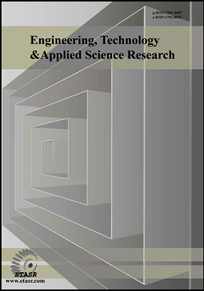Limits of Number of Motes at Smart City Scenarios for LoRaWAN
Abstract
LoRaWAN is an emerging technology as a solution to IoT sensor networks. Since it is still in the evolvement stage, academic and industrial researches and applications have to be conducted in order to analyze its limitations and possible improvements. In this paper, the number of motes that could transmit data to a gateway within a 95% confidence interval has been studied under a number of scenarios. According to the results, the most significant parameter regarding the number of motes is the period of the downlink signal.
Keywords:
LoRa, LoRaWAN, spreading factor, channel limitationsDownloads
References
K. Mikhaylov, J. Petajajarvi, J. Janhunen, “On lorawan scalability: Empirical evaluation of susceptibility to inter-network interference”, European Conference on Networking and Communications, Oulu, Finland, June 12-15, 2017 DOI: https://doi.org/10.1109/EuCNC.2017.7980757
F. Adelantado, X. Vilajosana, P. Tuset-Peiro, B. Martinez, J. Melia-Segui, T. Watteyne, “Understanding the limits of LoRaWAN”, IEEE Communications Magazine, Vol. 55, No. 9, pp. 34-40, 2017 DOI: https://doi.org/10.1109/MCOM.2017.1600613
D. P. Bertsekas, J. N. Tsitsiklis, Introduction to Probability, Athena Scientific, 2002
Semtech, LRra Modulation Basics, AN1200.22, 2015
B. Vejlgaard, M. Lauridsen, H. Nguyen, I. Z. Kovacs, P. Mogensen, M. Sorensen, “Interference impact on coverage and capacity for low power wide area iot networks”, IEEE Wireless Communications and Networking Conference, San Fransisco, USA, March 19-22, 2017 DOI: https://doi.org/10.1109/WCNC.2017.7925510
ETSI, ETSI 300 220-1 (v2. 4.1), Electromagnetic Compatibility and Radio Spectrum Matters (ERM), 2012
D. Bankov, E. Khorov, A. Lyakhov, “On the limits of lorawan channel access”, International Conference on Engineering and Telecommunication, Moscow, Russia, November 29-30, 2016 DOI: https://doi.org/10.1109/EnT.2016.011
Downloads
How to Cite
License
Authors who publish with this journal agree to the following terms:
- Authors retain the copyright and grant the journal the right of first publication with the work simultaneously licensed under a Creative Commons Attribution License that allows others to share the work with an acknowledgement of the work's authorship and initial publication in this journal.
- Authors are able to enter into separate, additional contractual arrangements for the non-exclusive distribution of the journal's published version of the work (e.g., post it to an institutional repository or publish it in a book), with an acknowledgement of its initial publication in this journal.
- Authors are permitted and encouraged to post their work online (e.g., in institutional repositories or on their website) after its publication in ETASR with an acknowledgement of its initial publication in this journal.






